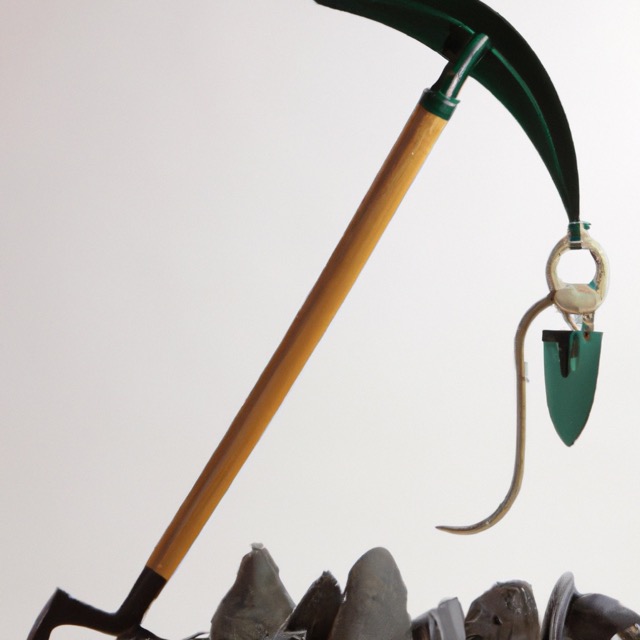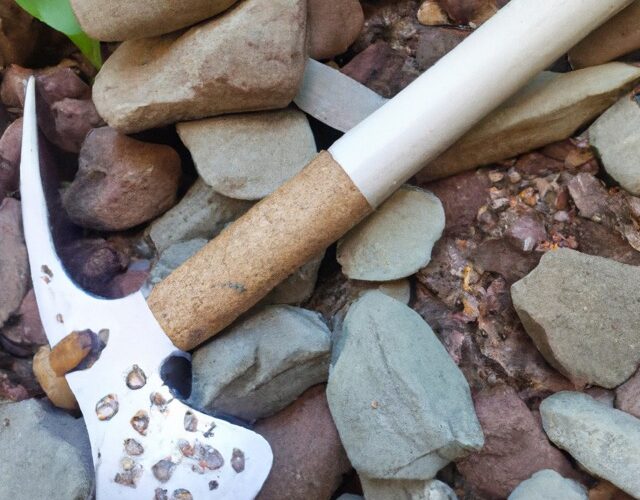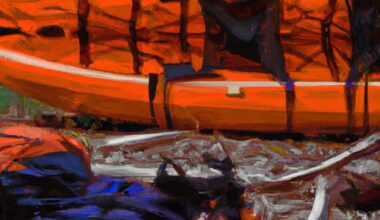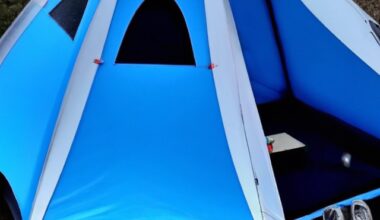Are you an adventurous spirit in search of an exhilarating outdoor experience? If that’s the case, Camp climbing gear might be the perfect addition to your exploration toolkit! Camp climbing gear is specially designed equipment that enhances your safety and performance while engaging in the thrilling and demanding activity of camp climbing. This unique form of rock climbing entails establishing a self-supportive camping base at the base of the mountain or cliff you’re scaling. By equipping yourself with the right camp climbing gear, you’ll have the confidence and resources to explore the less traversed areas of the mountain, where foot traffic is scarce, and access to services or supplies is limited.
Camp climbing is an excellent opportunity to test your skills and strengthen your muscles. It also provides a unique chance to observe the incredible beauty of nature and get up close and personal with a majestic mountain. With the right gear, proper training, and sense of adventure, camp climbing can be an incredibly rewarding and fulfilling activity.
Essential Gear for Camp Climbing
When you go camp climbing, it’s essential that you bring all of the necessary safety gear. A few important pieces of equipment include a harness, which should be properly fitted to you, a helmet, carabineers, and ropes. Other items you may need are webbing, protection, belay devices, quickdraws, and an anchor system.
A harness is one of the most important pieces of gear when it comes to camp climbing. You’ll want to make sure that your harness is the right size and is properly fitted to you. It’s also important that it’s made from durable materials so that it can withstand the elements. Ensure that you check the webbing and buckles and replace any that are frayed or damaged.
A helmet is another important piece of equipment and is non-negotiable when it comes to camp climbing. Choose a helmet that fits snugly on your head and is made from shock-resistant material to protect your head from impact and debris.
Carabineers are also critical for camp climbing. Make sure that you check all carabineers and quickdraws for wear and tear before you head out so that they can secure the anchor points safely. You’ll also need webbing, soft slings, and static rope for building anchor systems. This type of rope is particularly important for setting up rappels.
Finally, you’ll need a belay device, which is used to connect a climber to the rope while they ascend and descend. Many models come with a brake assist feature, allowing you to maintain control of the rope during belaying. When selecting a belay device, make sure that you pick one that is compatible with your equipment and has the latest safety features.
Setting Up Camp
Setting up a camp site before any type of climbing is essential for any climber. The most important part about setting up a camp before climbing is establishing a safe place to rest and store your gear.
When it comes to choosing a camp site, the key is to find a good location that’s accessible and flat. Try to find a spot that offers some shelter from the wind, rain, or snow.
Once you have settled on a location, the next step is to set up the camp. You will need a few basic pieces of equipment such as a tent, sleeping bag, and other camping essentials. Make sure to bring a portable stove or firepit with enough fuel to last through the night.
You should also create a designated area for your climbing gear. Making sure your gear is organized and secured will help make the climbing process more efficient and safe.
Finally, make sure to bring a few extra items for personal comfort such as a flashlight, matches, and other items that can help you stay warm and safe during the night.
Basic Safety Tips
When it comes to camping and climbing, safety is always the most important consideration. Before heading up the mountain, campers should make sure they have all the necessary gear and inspect it for any signs of wear or damage. Climbers should also have a basic understanding of how to use the equipment correctly, such as harnesses, helmets, carabiners and ropes. Other safety protocols include learning first aid in case of an emergency, as well as being aware of the terrain, weather conditions and other hazards.
Before beginning the climb, it’s essential to review safety protocols with the group and ensure that everyone is on the same page. Carabiners and rope should be checked for any signs of wear or damage, and the rappel device should be properly set up. Anchor systems should be inspected and tensioned correctly before any climbing begins. All climbers should be familiar with rescue techniques, such as raising a fallen climber from a crevasse or abseiling down to help a trapped climber.
In addition to the equipment and safety protocols, climbers must also be aware of their environment. Checking the weather and understanding the terrain are important parts of the ascent. This includes being mindful of avalanche and rockfall hazards, as well as other potential threats such as wild animals. Being prepared with a plan in case of an emergency and having the right communication gear can mean life-saving minutes.
The key to safe Camp Climbing is preparation. Taking the time to check equipment, learn safety protocols and be aware of the environment can make all the difference between a successful and an unsuccessful climb.
Advanced Techniques
If you are an experienced climber, you are likely familiar with some of the more advanced techniques used in camp climbing. Lead climbing is one such technique, and involves clipping carabiners into fixed points along a route as you ascend. This helps to create a secure path for the climber and their belayer (the person responsible for managing the rope and providing assistance to the climber).
Anchor systems are another important component of camp climbing. These consist of several pieces of gear, such as webbing, cord or rope strung together to help create a secure way to rappel down a face or wall. This technique is best left to experienced climbers.
Rappelling is the act of descending a face or wall using a rope system and other gear such as a harness and carabiners. The rappeller controls the descent by managing and releasing the rope as they descend. Again, this is best performed by an experienced climber.
Finally, belaying is an additional safety measure that should be undertaken by all climbers. A belayer provides protection and assistance to the lead climber by managing the end of the rope from below. Belayers should always ensure that the rope is kept taut and can provide assistance to the climber if need be.
These more advanced techniques, though sometimes intimidating to newcomers, can open up a world of exciting possibilities for experienced climbers. Having an understanding of these techniques and when/how to use them is fundamental to taking your camp climbing to the next level.

Conclusion
Camp climbing is a great way to enjoy the outdoors and experience some thrilling heights. Before taking on a camp climbing adventure, it’s important to make sure that you have the essential gear and know how to properly set up your campsite and follow safety protocols.
These include checking the condition of your gear, proper usage of equipment, and being prepared for an emergency. Experienced climbers can also explore more difficult techniques such as lead climbing, anchor systems, rappelling and belaying. With the right preparation and knowledge, you can enjoy a safe and enjoyable camp climbing experience.
Camp Climbing Gear & Safety Tips: Master the Art of Climbing Fun!
What is camp climbing gear?
Camp climbing gear is a type of equipment used for climbing activities during camping. It includes climbing harness, rope, carabiners, climbing helmet, and other climbing equipment to ensure protection and safety while climbing.
What is a climbing harness?
A climbing harness is a piece of equipment that is worn around the waist and thighs of a climber. It is used to attach the climber to a rope and provide support and protection while climbing.
Is there free shipping for camp climbing gear?
Yes, we offer free shipping on all orders of camp climbing gear. Within the US, shipping is free and regular, and the products will be delivered within a specified time frame.
How can I ensure my safety during camping?
You need to ensure that you have the necessary camp safety equipment and knowledge to work with this equipment. You need to work with camp gear that you need and know how to use it. Make your climbing equipment is in good condition, and you know how to inspect the gear properly.
What camp climbing gear do I need for climbing?
You will need a climbing helmet, climbing harness, rope, carabiners, climbing shoe, and other camp gear required for climbing activities. Purchase the right climbing equipment and ensure the size is perfect, or it might compromise your safety.
Can I buy camp climbing gear online?
Yes, you can buy camp climbing gear online from trusted sources. Our online store offers a wide range of climbing gear at prices that suit your budget. When you shop online, you can compare and get the best quality and price among different offerings.
Does Camp Ares Air provide good protection?
Camp Ares Air is a comfortable and lightweight helmet that provides excellent protection for climbers. It is designed with a durable shell that protects the head from any impact that might result during climbing. The helmet is ideal for ice climbing, mountaineering, and rock climbing.
What is the best climbing gear for beginners?
The best climbing gear for beginners is a harness, climbing shoes, chalk bag, belay device, and a carabiner. Other items that can be helpful for beginners include a helmet, quickdraws, a crash pad, and a rope. Having the right gear is essential for any climber, and it is important to choose items that are appropriate for the type of climbing that you are doing.




